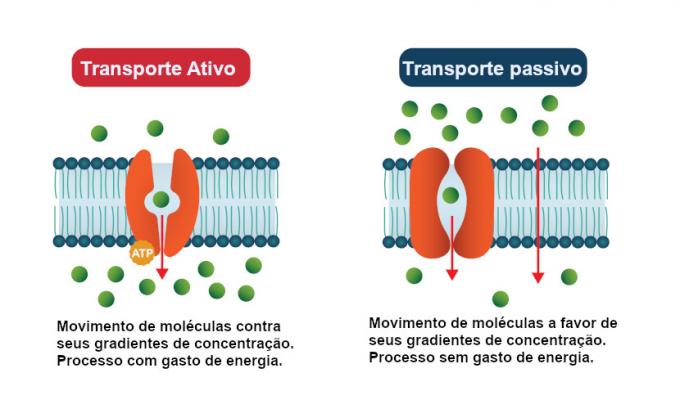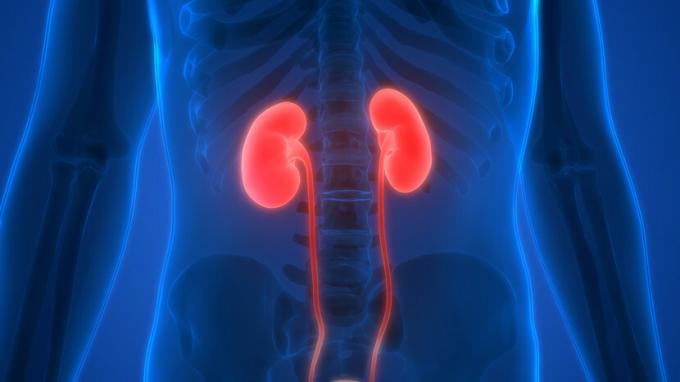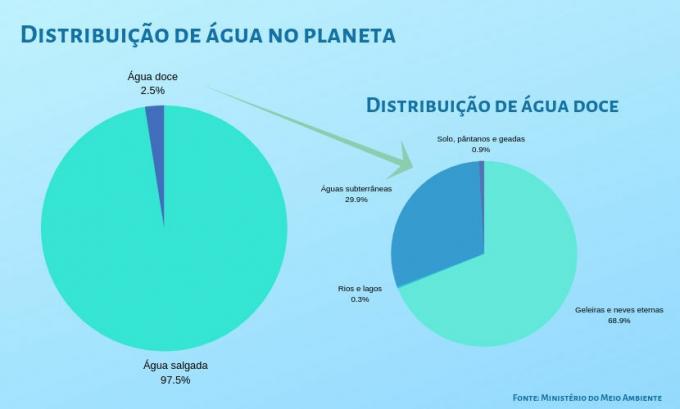O active transport is a type of transport of molecules across the plasma membrane where energy is used up by cell. In the case of active transport, the movement of molecules occurs against their concentration gradients. This means that solutes (substances that can be dissolved by a solvent) can pass through the plasma membrane from the region where they are less concentrated to the region where they are more concentrated.
Read more: Osmosis - how does this process occur and so common among cells
Active transport summary
Active transport is a type of transport in which the cell expends energy to move solutes against their concentration gradients.
The sodium-potassium pump is an example of active transport.
Active transport differs from passive transport, as the cell does not use energy in it.
What is active transport?
Active transport can be defined as a type of transport that uses energy to ensure the movement of solutes against their gradients of concentration, that is, from the region with the lowest concentration to the one with the highest concentration of solute. Like passive transport called facilitated diffusion, active transport needs the help of
transport proteins.However, in this case, as the movement of solutes occurs against the concentration gradient, the cell must expend energy for the process to occur. Transport proteins that act in active transport are carrier proteins, not being observed the presence of channel proteins, as in passive transport.
Sodium-potassium pump
The Sodium Potassium Pump is a specific case of active transport, in which the pumping of ions against concentration gradients occurs. The concentration of sodium ions (Na+) is larger outside the cell than inside it. The potassium ion concentration (K+) is smaller inside the cell than outside it.

the na+ present in the cytoplasm, it binds to the sodium-potassium pump. ATP (the molecule that supplies the cell with energy) transfers a phosphate group to the protein, a process known as phosphorylation. THE phosphorylation causes the protein to change its shape. This shape change decreases the protein's affinity for Na+, which is released to the external environment.
The new shape acquired by the protein has great affinity with K+, which binds to the protein and promotes the release of the phosphate group. By losing phosphate, the protein restores its original shape, which has a lower affinity for K+. OK+ is released and the cycle starts again. During ion pumping, the sodium-potassium pump transfers three sodium ions out of the cell for every two potassium ions pumped into the cell.
Read more: Cellular respiration - process that cells carry out to obtain energy
Difference between passive transport and active transport

Passive transport and active transport aim to ensure that substances cross the plasma membrane. They differ in that, in passive transport, thesubstances cross the membrane without the cell expending energy, unlike active transport. Furthermore, in this the substances move across the membrane against their concentration gradients.
Video lesson on passive and active transport
Exercise on active transport
Now that you know a little about active transport, resolve the following question.
|
On active transport, mark the wrong alternative: a) Active transport is a type of transport across the membrane that requires energy. b) In active transport, solutes move against their concentration gradient. c) The sodium-potassium pump is an active transport case. d) In active transport, molecules diffuse across the plasma membrane, with no need for the participation of proteins. e) Active transport differs from passive transport, as in the latter there is no energy expenditure. |
Resolution: The incorrect alternative is the letter d. In active transport, the action of transport proteins is necessary, which act by ensuring the movement of molecules across the membrane against their concentration gradients.



